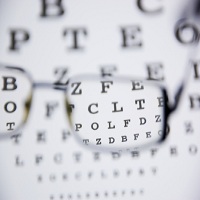Presbyopia: a New Potential Pharmacological Treatment
Medical hypothesis discovery and innovation in ophthalmology,
Vol. 1 No. 1 (2012),
1 March 2012
,
Page 3-5
Abstract
Presbyopia occurs after 40 years of age in humans with a progressive loss of accommodation. Accommodation depends on the contraction of the ciliary muscle and iris, lens changes and convergence. The parasympathetic system regulates the degree of ciliary muscle and iris contraction necessary to modify the shape and position of the lens and its stimulation is effective through the activation of muscarinic receptors that are present in both structures. The hypothesis proposed here suggests the correction of accommodation in emmetropic presbyopic patients using a pharmacological treatment that includes a cholinergic agent combined with non-steroidal anti-inflammatory drugs (NSAIDs). This drug combination can restore near vision without affecting distance vision. It is important to note that the pharmaceutical form used was devoid of any inflammatory or other collateral effects.
References
Croft MA, Glasser A, Kaufman PL. Accommodation and presbyopia. Int Ophthalmol Clin. 2001 Spring;41(2):33-46. PMID: 11290920.
Glasser A. Accommodation: mechanism and measurement. Ophthalmol Clin North Am. 2006 Mar;19(1):1-12. PMID: 16500524.
Garner LF, Yap MK. Changes in ocular dimensions and refraction with accommodation. Ophthalmic Physiol Opt. 1997 Jan;17(1):12-7. PMID: 9135807.
Koeppl C, Findl O, Kriechbaum K, Drexler W. Comparison of pilocarpine-induced and stimulus-driven accommodation in phakic eyes. Exp Eye Res. 2005 Jun;80(6):795-800. PMID: 15939035.
Pardue MT, Sivak JG. Age-related changes in human ciliary muscle. Optom Vis Sci. 2000 Apr;77(4):204-10. PMID: 10795804.
Croft MA, Kaufman PL, Erickson-Lamy K, Polansky JR. Accommodation and ciliary muscle muscarinic receptors after echothiophate. Invest Ophthalmol Vis Sci. 1991 Dec;32(13):3288-97. PMID: 1748559.
Ostrin LA, Glasser A. Comparisons between pharmacologically and Edinger-Westphal-stimulated accommodation in rhesus monkeys. Invest Ophthalmol Vis Sci. 2005 Feb;46(2):609-17. PMID: 15671289.
Mathews S. Scleral expansion surgery does not restore accommodation in human presbyopia. Ophthalmology. 1999 May;106(5):873-7. PMID: 10328383.
Koopmans SA, Terwee T, Barkhof J, Haitjema HJ, Kooijman AC. Polymer refilling of presbyopic human lenses in vitro restores the ability to undergo accommodative changes. Invest Ophthalmol Vis Sci. 2003 Jan;44(1):250-7. PMID: 12506082.
Wendt M, Glasser A. Topical and intravenous pilocarpine stimulated accommodation in anesthetized rhesus monkeys. Exp Eye Res. 2010 May;90(5):605-16.PMID: 20159011.
Ostrin LA, Glasser A. Effects of pharmacologically manipulated amplitude and starting point on edinger-westphal-stimulated accommodative dynamics in rhesus monkeys. Invest Ophthalmol Vis Sci. 2007 Jan;48(1):313-20. PMID: 17197548.
Schalnus R. Topical nonsteroidal anti-inflammatory therapy in ophthalmology.Ophthalmologica. 2003 Mar-Apr;217(2):89-98. PMID: 12592044.
Zimmerman TJ, Wheeler TM. Miotics: side effects and ways to avoid them. Ophthalmology. 1982 Jan;89(1):76-80. PMID: 7070779.
Fiorelli VM, Bhat P, Foster CS. Nonsteroidal anti-inflammatory therapy and recurrent acute anterior uveitis. Ocul Immunol Inflamm. 2010 Apr;18(2):116-20. PMID: 20370341.
Jabs DA. Treatment of ocular inflammation. Ocul Immunol Inflamm. 2004 Sep;12(3):163-8. PMID: 15385193.
- Abstract Viewed: 3792 times
- Full text PDF Downloaded: 3733 times


